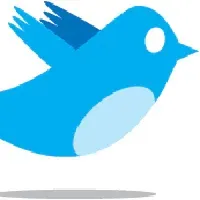Microblogs & Tweets
Written by

Sometimes I see the internet as a interconnected hive mind. A brain that is learning every time we program it with a file or a new tag. It seems even more like this to me, now that the online world is all a Twitter.
Sometimes I see the internet as a interconnected hive mind. A brain that is learning every time we program it with a file or a new tag. It seems even more like this to me, now that the online world is all a Twitter.
Microblogging is like the telegraph of the internet. Nodes talking in the hive mind. Flashes of consciousness.
Watching Twittervision for a few minutes feels like you are watching neurons fire as you fly round the world. Of the main micro-blogging systems Twitter is currently the best known, and is definitely the most cloned service, as shown in 7 Twitters of the World at Mashable. They also report that Twitter is banned in United Arab Emirates, and that "You know you've really made it as an online entity when an entire country bans your site."
The advent of blogging in 1999 heralded a new age of ease in online publishing for non geeks. Then along came Real Simple Syndication (RSS) with Mashups, Pipes and Feeds.
Now we have micro-blogging with sites like Twitter, Jaiku, Pownce and Yappd allowing snippets of 140 characters or less to be sent to followers via email or mobile phone text message.
Slideshare has two pages of presentations on the microblogging phenomenon, which has been driven by the desire to easily connect the web and mobile messaging.
So what is Twitter and why should you tweet? Is it worth joining the twittering classes and trying to become one of the Twitterati? The unofficial Twitter Fan Wiki says that "Twitter is a way of life. It's living with a publicity policy. It's friends, Romans and country people the world over engaged in timely snippet conversations that fit into 140 character chunks."
Twitter is deceptively simple to use and virulent in how quickly tweets appear in Google's search results. You join at twitter.com, compile your message in 140 characters or less to answer one simple question 'What are you doing?' A quick search on names of topics and you can start following other people. Twittiquette states that if someone starts following you, then you follow them back, which is why both my MsBehaviour and Creative Biz NZ tweets are currently being followed by Barack Obama.
PBS reports that even major media companies such as the BBC, The New York Times and Al Jazeera are trying out Twitter as a way to send headlines and links to stories. As Ana Marie Cox, or political blogger 'Wonkette' says that micro-blogging forces the writer to think economically and in a digital age economy, brevity, and above all clarity are key.
It's worth checking out the the New Media Social Wiki for a list of Twitterpacks on a number of topics including Social Media, Marketing, Podcasters, and Virtual Worlds. See what is happening with Literature Twitters and read a Twittory or twitter story created by 140 Elementary and Middle School Students Across the Globe at Many Voices. Twitterprose is a daily RSS feed and Twitter post featuring lines (first or otherwise) from creative nonfiction. There is a growing sub-genre of Twitterlit and book tweets, and professors are finding ways to use twitter in academia to reach their students.
Bob Baker's Smart Ways Authors Can Use Twitter for Books is well worth a read and his Mr Buzz Factor feed is a mine of useful information on self publishing and indie authorship. His feed is excellent especially for indie musicians and writers and is 'dedicated to showing indie artists how to get exposure, connect with fans, sell more music, and increase their incomes.'
Other Twitter widgets and applications allow you to weave your Twitter feed into other internet ecosystems. Twittervision ports your tweets into Facebook to keep your friends and groups up to date. Managing your one to one, and one to many broadcasts is now as easy as one, two, tweet.